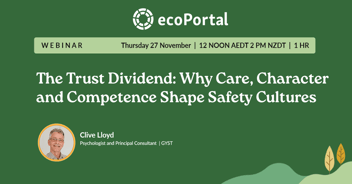Here’s a statistic to kick things off: we spend approximately ⅓ of our time here on Earth working. This is either a terrifying number or a rewarding fact; it depends on your work experience and, ultimately, how that time has been spent. While every job will have highs and lows, a critical factor that affects our experience of work is the organisational culture.
Organisational culture, in academic terms, is the collective way of thinking and doing things in a particular place that influences collective beliefs and perceptions. In less academic terms, the organisational culture is essentially the vibe of the place.
Culture is ultimately a make-or-break factor for employees. Great pay is motivating, but if individuals feel like they’re walking on eggshells every time they set foot into the office, or don’t feel respected and are constantly belittled, forget it - they’ll be out before you can say goodbye.
Great culture is motivating. According to Maslow’s Hierarchy of Needs, feeling like you belong (social needs) and you’re valued and respected (self-esteem needs) are critical to being motivated.
Most people want to work in an environment where they feel respected, and like they belong. Culture also creates a sense of identity within the organisation, that helps direct employees in their own decision-making and goal-setting. When there’s a genuine belief of, this is who we are and the kind of thing we strive for, people have a clear path to self-realisation within an organisation
How might an organisation define its culture? Before we make any attempts to improve culture or assumptions about what culture entails, it’s important to understand how multi-faceted organisational culture really is.
Many organisations recognise the value of culture and use surface-level cultural perks to try and attract top talent in the recruitment process.
The Iceberg Model:
Edward T. Hall pioneered the iceberg model of culture. While his work refers to culture on a societal level, it’s easily applied to examine a corporate culture and helps us understand exactly how culture develops.
Get fresh H&S insights weekly
.jpg?width=800&height=419&name=Iceberg%202%20(1).jpg)
His model shows how culture can be compared to an iceberg, where 10% of the iceberg is visible above the surface, but the remaining 90% is hidden underneath. According to Hall, organisational culture is similar.
What we often mistake as organisational culture is only the visible 10%; think, the tangible artefacts that are only surface-level. In the workplace, these might include perks such as a coffee machine, a trendy office space, providing a workplace fruit bowl, and other more obvious things. Often, workplaces rely on these to showcase their internal culture during the hiring process.
But, as Hall cleverly depicts, most of what a culture is made up of is intangible. These include underlying shared values, shared assumptions, beliefs, and attitudes; the elements that are trickier to define and more elusive. Trying to capture them can be like trying to catch the breeze - it just slips through your fingers.
These intangible cultural elements however, are the driving force that dictates both how and why things get done at any organisation. Through assessing how people feel on a daily basis at work, you can capture an accurate, vivid depiction of an organisation’s culture - beyond the perks.
Ask questions that consider the underlying values of the company - not just what’s being said from the top-down, but rather, the values that are in fact espoused down on the ground. Sometimes there’s a discrepancy between what the head office wants the culture to be, and how it manifests in reality in day-to-day BAU. Something as important as communication people both easily and frequently get wrong, often underpinning the kind of issues that might snowball into larger, cultural attitudes that shape the organisation.
Consider how tasks are set, how teams communicate, and how the conversation flows in between jobs. Are your people comfortable enough to take a full break from work at lunchtime? Or do they feel pressured to eat and work, forgetting to step away from the computer? Is interpersonal conflict a problem? Is your HR team often engaging in conflict resolution or mediation? Would your staff actually go to HR in the first place?
Details like these reveal the reality of your organisational culture, no matter what kind of values are established from the board table initially.
The Ping-Pong Table Issue
A curious issue has arisen in the past decade, after the influence of Silicon Valley giants’ corporate culture, and an increased focus on employee wellbeing.
The symbolism of a ping-pong table - a hallmark of a classic start-up culture - is what some companies rely on to communicate an energetic, fun-loving corporate culture in their recruitment. You’ll see it in their job advert video, or perhaps in the office tour after the interview; that glorious ping-pong table, proudly displayed to emphasise what a great culture the organisation has.
However, as many critics have pointed out, what often happens is that the company ignores the remaining 90% of their culture that’s below the surface. While a ping-pong table might symbolise fun, if fun is not a shared value at the workplace, the table will only collect dust.
.jpg?width=800&height=419&name=Iceberg%203%20(1).jpg)
Artefacts such as ping-pong tables, flamboyant in-office slides, bars and the like are perks that became popularised by Silicon Valley giants, such as Google, Facebook and more. 20 years ago, these perks were unusual for an office and helped increase their desirability as an employer.
As a result, such perks were popularised and become embedded symbols of a great working culture - that is, one that values employee wellbeing and happiness. In a bid to hop on the trend and mimic these top companies, many smaller organisations chose to jazz up their workplaces, including their own ping-pong tables and other fun perks as a unique selling point that might help them attract top talent.
However, a common issue arose. While they are a symbol of a great working culture at the original pioneers of the fun working office at Google and the likes, sometimes they’re mistaken as a cultural fix in smaller companies. If they’re used to try and improve morale and help nullify cultural issues, the leadership team misses the opportunity to dive into the intangible cultural assumptions that might permeate the issues, to begin with - things that aren’t easily fixed with a game of pool.
The take-home message is that culture needs to be considered beyond surface-level perks. They’re a great addition to any workplace, but it’s no use having them if the culture values hard work to the extent that employees feel like they can’t be seen actually using them.
Final words:
Organisational culture is a make-or-break part of the working world. It’s all too clear as we’re in the midst of what’s been dubbed the Great Resignation, where workers are putting increasing value in a positive working environment, and are happy to leave their job if that’s no longer on offer.
If your organisation is suffering from cultural issues that create major problems such as high labour turnover, it might be time to sketch out an iceberg and work out what’s going on.
What good is a ping-pong table if you feel guilty playing it?
Want to know more about how to create a better health and safety culture? View ecoPortal smarter safety videos. ecoPortal health and safety software can also help your business. Try a demo or get in touch with the team at ecoPortal.%20(1).jpg)



.png?width=352&name=Copy%20of%20RETAIL%20SAFETY%20(2).png)

.jpg?width=352&name=AI%20health%20and%20safety-1%20(1).jpg)


